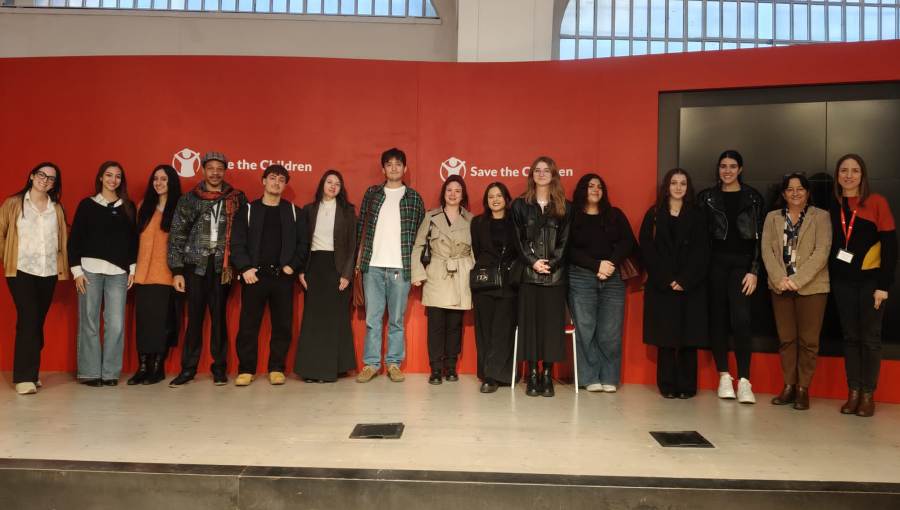Fashion and Politics: JCU Welcomes Giulia Rossi
The JCU Institute for Entrepreneurship and the Center for Career Services organized a lecture by Professor Giulia Rossi called “Fashion and Politics: The Narrative of Women in Power,” on November 4, 2021. Rossi teaches Digital Fashion Media at La Sapienza University in Rome. The talk was held in the context of Professor Antonella Salvatore’s Retailing Applied to Fashion Industry class.

Giulia Rossi
Rossi began by saying that the way one dresses can communicate a lot and convey intentional or unintentional messages. She explained that in the past, women were mainly supposed to showcase the financial status of the family. In addition, the way a woman dressed reflected a specific political order, social category, and moral position. According to American economist Thorstein Veblen’s Theory of the Leisure Class (1899), “wives and daughters increasingly became vehicles of vicarious display. The wealth and prestige of the bourgeois male were displayed in the elegance of his wife and daughters.”
Rossi explained that clothes can also be a tool to communicate in the world of politics. She gave the example of Democrat Representative Alexandria Ocasio-Cortez, who wore a white suit, red lipstick, and big gold hoop earrings when she was sworn into Congress. In a tweet, Ocasio-Cortez explained that “Lip+hoops were inspired by Sonia Sotomayor, who was advised to wear neutral-colored nail polish to her confirmation hearings to avoid scrutiny. She kept her red. Next time someone tells Bronx girls to take off their hoops, they can just say they’re dressing like a Congresswoman.”
For her inauguration ceremony, U.S. Vice President Kamala Harris wore a purple dress, which is a combination of blue and red, and symbolizes a color that politically unites and does not divide, thus sending a conciliatory message. Another example that Rossi provided is the “suffragette white” suit that Harris wore during her acceptance speech on November 7, 2020, which according to Vogue “connects her election to the fight for women’s rights.”
Rossi explained that the National Woman’s Party, an American political organization founded in 1913 to fight for women’s suffrage, adopted white, gold, and purple as its colors, with white as “the emblem of purity.” Like Harris, American politician Geraldine Ferraro, the first woman to run for Vice President of the U.S., wore a white suit in 1984, when she accepted the Democratic Party’s nomination. Hillary Clinton also wore white suits at various pivotal moments during her presidential race in 2016.
Jackie Kennedy Onassis, the wife of former U.S. President John F. Kennedy, was the first to create a strong public image through the way she dressed. However, her style was considered too “French” so American designer, Oleg Cassini, was tasked with transforming her public image. Former First Lady Michelle Obama has always paid close attention to the way she dressed. For example, when she welcomed Italian Prime Minister Matteo Renzi, she wore an Atelier Versace dress. During the Democratic convention that preceded Joe Biden’s election, she wore a necklace that read “vote.” Regarding Hillary Clinton, Rossi said that she has always conveyed a sense of independence from her husband, former U.S. President Bill Clinton, and that her “blatant disregard for her appearance back in the day is what makes her so much more of a style icon now.”
Rossi explained that the relationship between fashion and politics in the U.S. is very different from Europe. According to Rossi, the idea that appearances are contrary to substance is still prevalent in Europe. The American press interprets the way a female politician decides to dress and analyzes it reflecting on why that choice was made.
Margaret Thatcher, the Prime Minister of the U.K. from 1979 to 1990 and leader of the Conservative Party, often wore blue or dark suits with an austere cut, that is, a feminine dress, but proposed in a rather severe version,” Rossi explained. Angela Merkel, the current German Chancellor, always wore suits to convey an idea of stability. Italian politicians Nilde Iotti (President of the Chamber of Deputies from 1979 to 1992) and Tina Anselmi (the first woman to become Minister of Labor), adopted a more neutral look, in order to avoid being labeled as frivolous. In 2019, Italian politician Teresa Bellanova was mocked and insulted for wearing a bright blue suit at her swearing-in ceremony.
Rossi concluded by saying that the connection between women, fashion, and politics today manifests itself in multiple forms, and enables women to establish their authority in a professional and political environment traditionally dominated by men.





